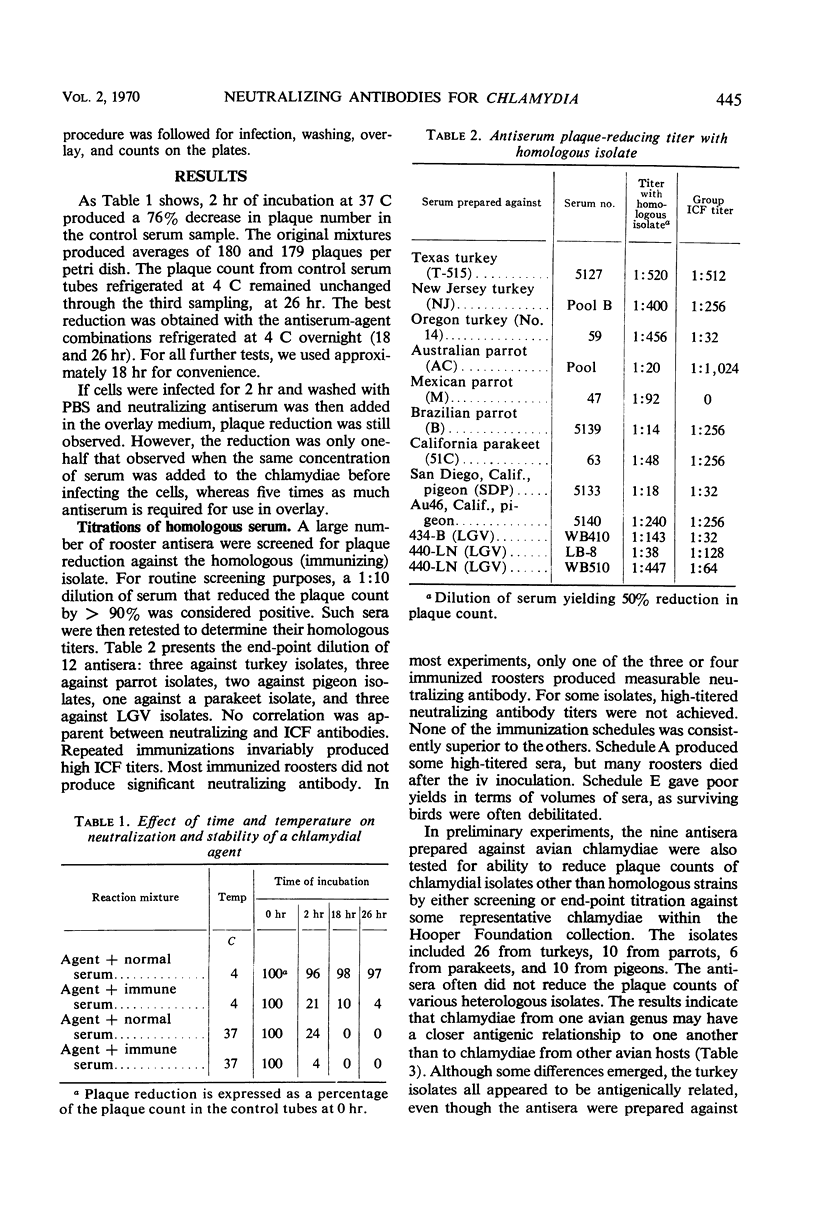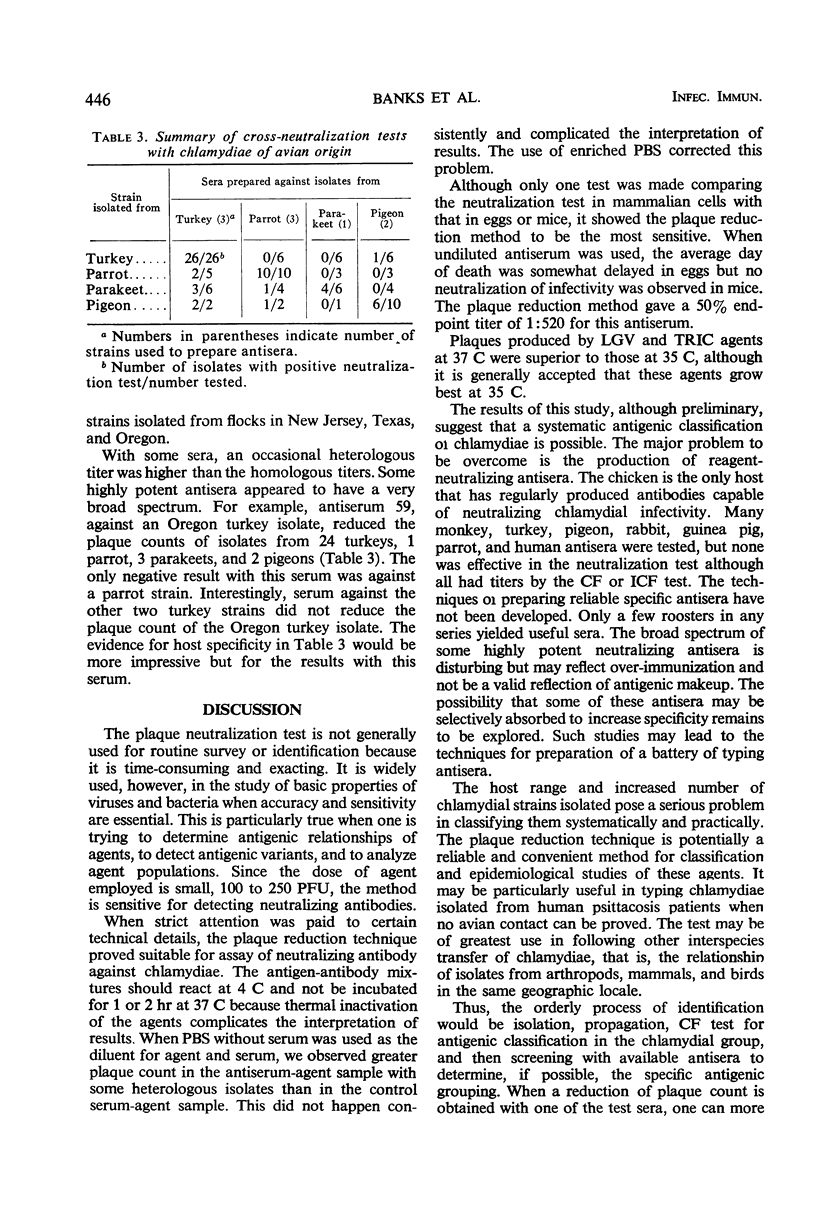Abstract
Some members of the genus Chlamydia (Bedsonia or psittacosis-lymphogranuloma venereum-trachoma-inclusion conjunctivitis group of microorganisms) produce plaques in monolayers of mouse fibroblast (L-929) cells. Hyperimmune chicken antisera may be capable of specifically reducing plaque counts. When the test was applied to chlamydiae isolated from avian species, the results indicated that different isolates with a common source had similar antigenic reactivity. The plaque reduction test is a potentially useful method for serotyping chlamydiae. The difficult aspect of the method appears to be a readily reproducible means of producing neutralizing antiserum.
Full text
PDF




Selected References
These references are in PubMed. This may not be the complete list of references from this article.
- BELL S. D., Jr, THEOBALD B. Differentiation of trachoma strains on the basis of immunization against toxic death of mice. Ann N Y Acad Sci. 1962 Mar 5;98:337–346. doi: 10.1111/j.1749-6632.1962.tb30556.x. [DOI] [PubMed] [Google Scholar]
- Banks J., Eddie B., Schachter J., Meyer K. F. Plaque formation by Chlamydia in L cells. Infect Immun. 1970 Mar;1(3):259–262. doi: 10.1128/iai.1.3.259-262.1970. [DOI] [PMC free article] [PubMed] [Google Scholar]
- FRASER C. E., BERMAN D. T. TYPE-SPECIFIC ANTIGENS IN THE PSITTACOSIS-LYMPHOGRANULOMA VENEREUM GROUP OF ORGANISMS. J Bacteriol. 1965 Apr;89:943–948. doi: 10.1128/jb.89.4.943-948.1965. [DOI] [PMC free article] [PubMed] [Google Scholar]
- JENKIN H. M., ROSS M. R., MOULDER J. W. Species-specific antigens from the cell walls of the agents of meningopneumonitis and feline pneumonitis. J Immunol. 1961 Feb;86:123–127. [PubMed] [Google Scholar]
- MANIRE G. P., MEYER K. F. The toxins of the psittacosis-lymphogranuloma group of agents; the toxicity of various members of the psittacosis-lymphogranuloma venereum group. J Infect Dis. 1950 May-Jun;86(3):226–232. doi: 10.1093/infdis/86.3.226. [DOI] [PubMed] [Google Scholar]
- MOULDER J. W., RUDA J., COLON J. I., GREENLAND R. M. The effect of passage with chloramphenicol upon the behavior of penicillin-resistant feline pneumonitis virus during subsequent passage with penicillin. J Infect Dis. 1958 Mar-Apr;102(2):186–201. doi: 10.1093/infdis/102.2.186. [DOI] [PubMed] [Google Scholar]
- Piraino F. F. The occurrence of psittacosis virus complement-fixing (CF), noncomplement-fixing (NCF) and neutralizing (N) antibodies in domestic pigeons. J Immunol. 1965 Dec;95(6):1107–1110. [PubMed] [Google Scholar]
- WANG S. P., GRAYSTON J. T. CLASSIFICATION OF TRACHOMA VIRUS STRAINS BY PROTECTION OF MICE FROM TOXIC DEATH. J Immunol. 1963 Jun;90:849–856. [PubMed] [Google Scholar]
- WENNER H. A. Psittacosis-lymphogranuloma group of viruses. Adv Virus Res. 1958;5:39–93. doi: 10.1016/s0065-3527(08)60671-5. [DOI] [PubMed] [Google Scholar]


